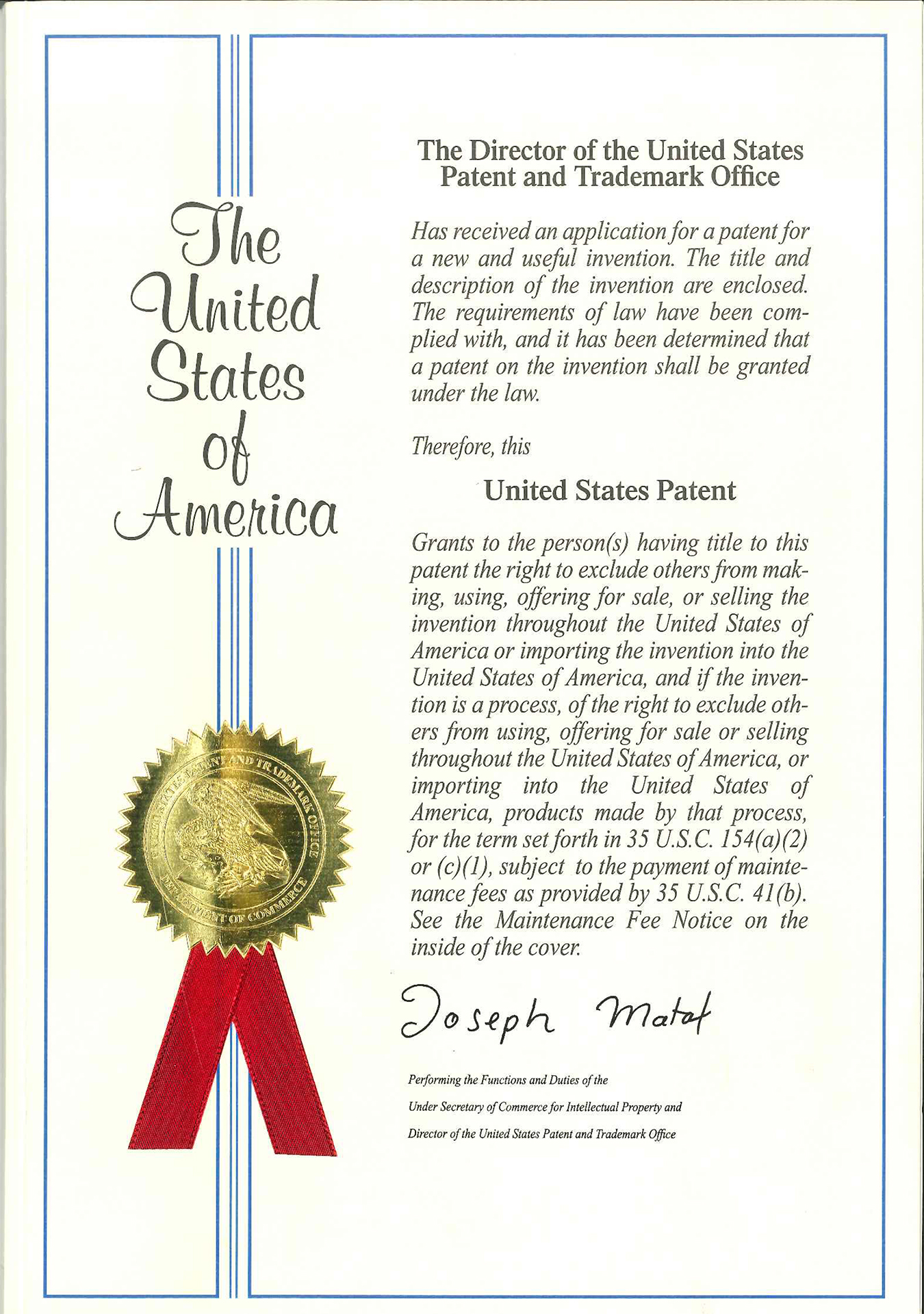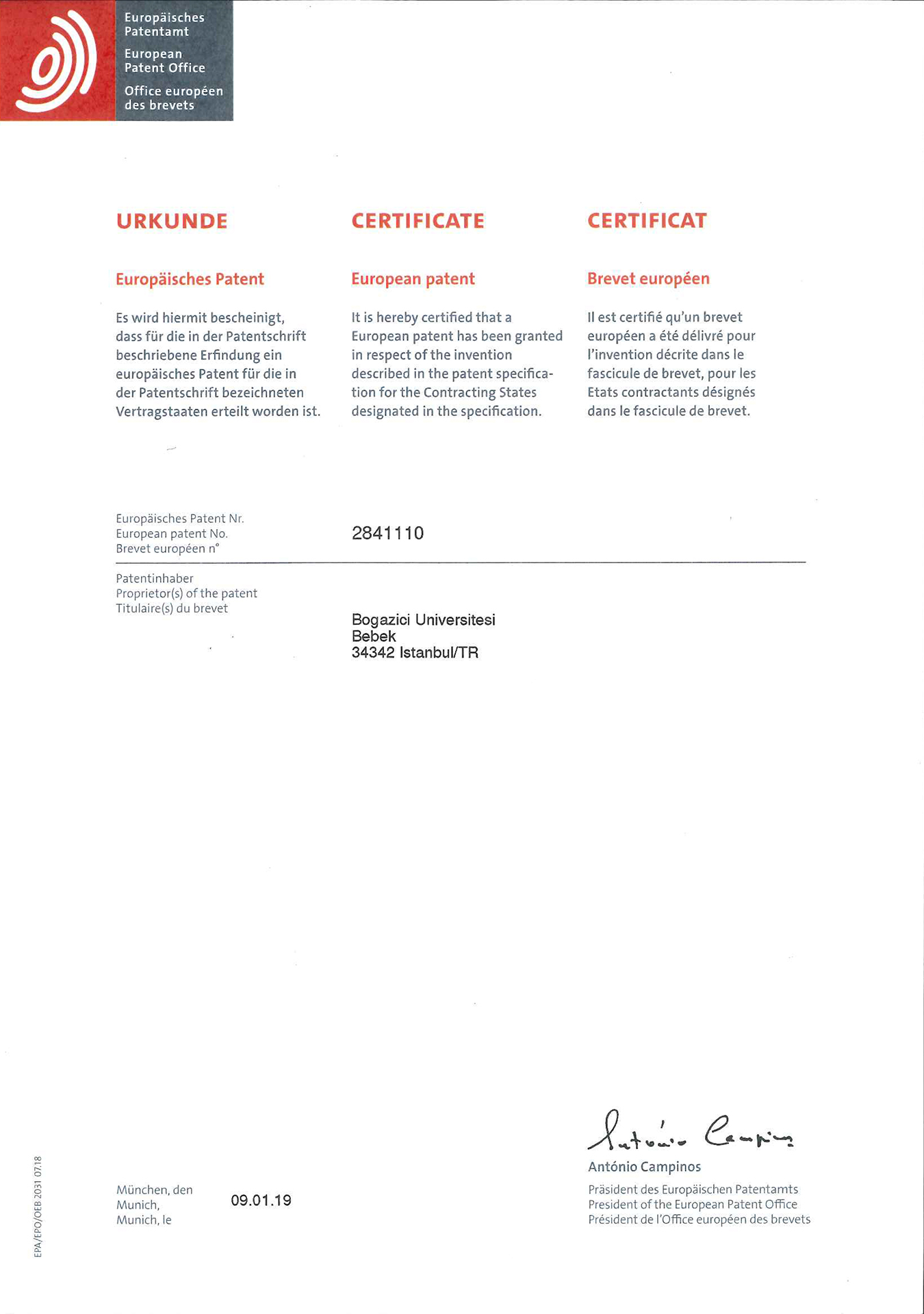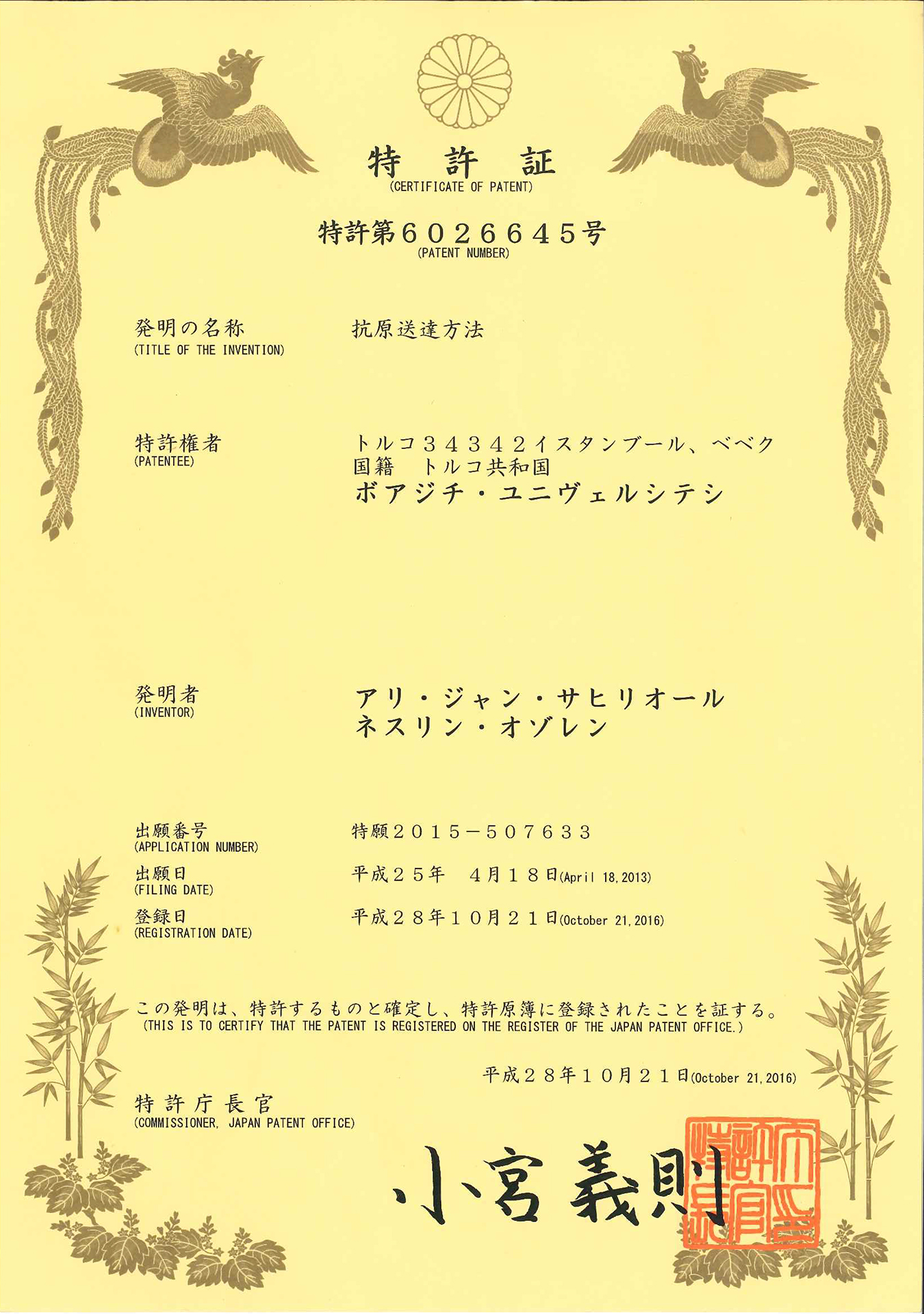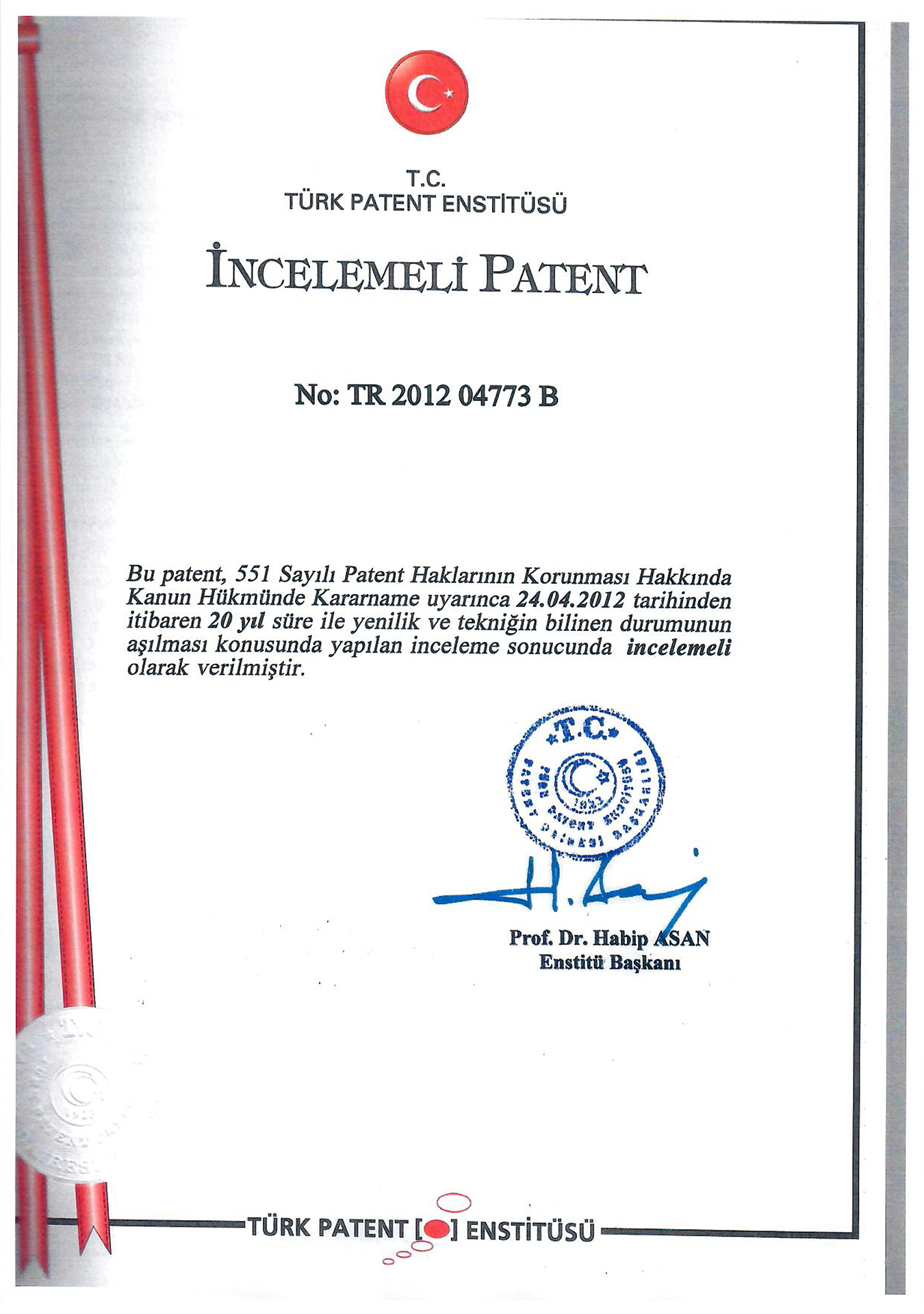ASC TECHNOLOGY
VacciZone has developed and patented a novel method for an antigen/bioactive delivery which increases both the antigenicity of the antigen as well as enhancing its stability at high temperatures, freeze thaw cycles and organic solvents.
What is special about the ASC Technology?
- Delivery of antigens to Antigen Presenting Cells (APCs) is enhanced
- Degradation of antigens after endocytosis or phagocytosis is decreased
- Size of antigens is increased to facilitate engulfment by APCs
- Antigen is stable at 37°C for >30 days
- Antigen can endure >8 freeze-thaw cycles without degradation
- ASC speck is a modified inflammasome complex so it can also function as an adjuvant
HOW DOES ASC TECHNOLOGY WORK?
See the below visualization of ASC Technology used for developing our Covid-19 vaccine.
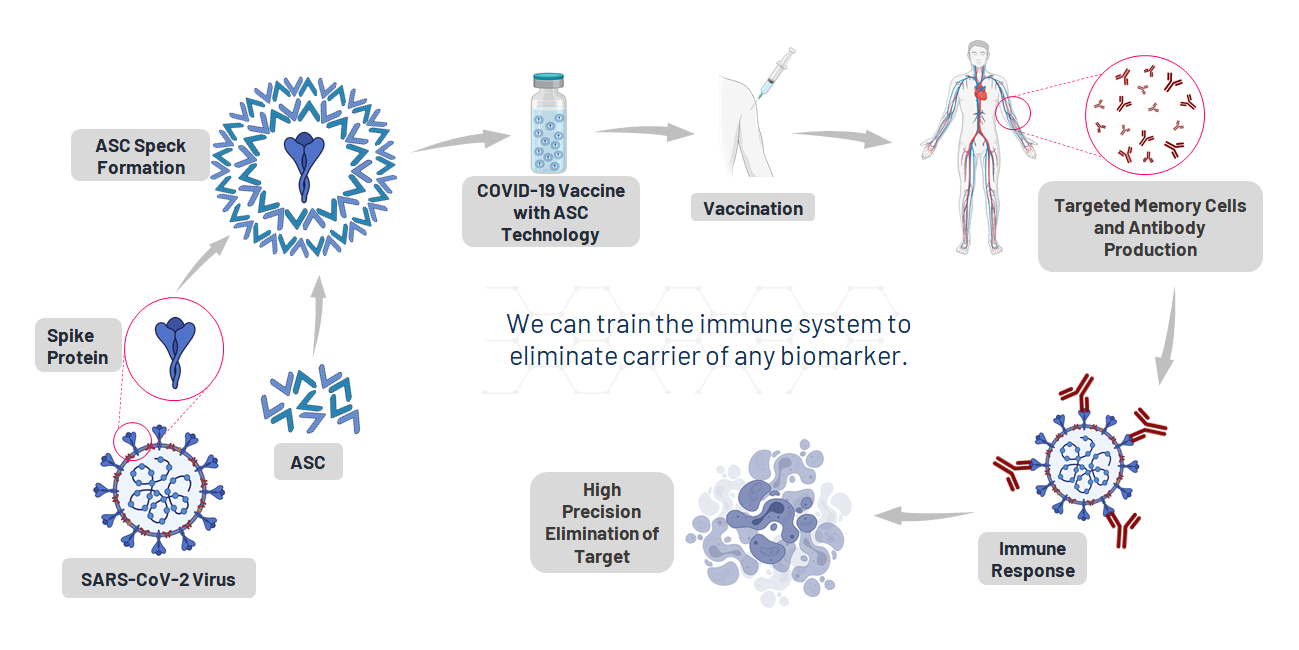
Patents
Our technology has been patented in USA, Europe, China, Japan and Turkey.
Publications
- Sahillioğlu AC*, Sümbül F*, Özören N** and Haliloğlu T**, “Structural and Dynamics Aspects of ASC Speck Assembly”, 2014, Structure., Dec 2;22(12):1722-34. doi: 10.1016/j.str.2014.09.011. Epub 2014 Nov 6.
- Sahillioğlu AC and Özören N, “Artificial Loading of ASC Specks with Cytosolic Antigens”, PLoS One. 2015 Aug 10;10(8):e0134912. doi: 10.1371/journal.pone.0134912. eCollection 2015.
- Eren E, Berber M and Özören N, “NLRC3 protein inhibits inflammation by disrupting NALP3 inflammasome assembly via competition with the adaptor protein ASC for pro-caspase-1 binding”, J Biol Chem. 2017 Jun 5. pii: jbc.M116.769695. doi: 10.1074/jbc.M116.769695. PMID: 28584053
- Franchi, L., Özören, N., Body-Malapel, M., Jagirdar, R., & Núñez, G. (2006). Cytosolic Recognition of Intracellular Bacteria by ASC and Ipaf Overcomes Endotoxin Tolerance Through Induction of Potent IL-1β Secretion. Inflammatory Bowel Diseases, 12, S21. doi: 10.1097/00054725-200604002-00043.
- Özören, N., Masumoto, J., Franchi, L., Kanneganti, T., Body-Malapel, M., & Erturk, I. et al. (2006). Distinct Roles of TLR2 and the Adaptor ASC in IL-1 /IL-18 Secretion in Response to Listeria monocytogenes. The Journal Of Immunology, 176(7), 4337-4342. doi: 10.4049/jimmunol.176.7.4337.
- Franchi, L., Amer, A., Body-Malapel, M., Kanneganti, T., Özören, N., & Jagirdar, R. et al. (2006). Cytosolic flagellin requires Ipaf for activation of caspase-1 and interleukin 1β in salmonella-infected macrophages. Nature Immunology, 7(6), 576-582. doi: 10.1038/ni1346.
- Kanneganti, T., Özören, N., Body-Malapel, M., Amer, A., Park, J., & Franchi, L. et al. (2006). Bacterial RNA and small antiviral compounds activate caspase-1 through cryopyrin/Nalp3. Nature,440(7081), 233-236. doi: 10.1038/nature04517

